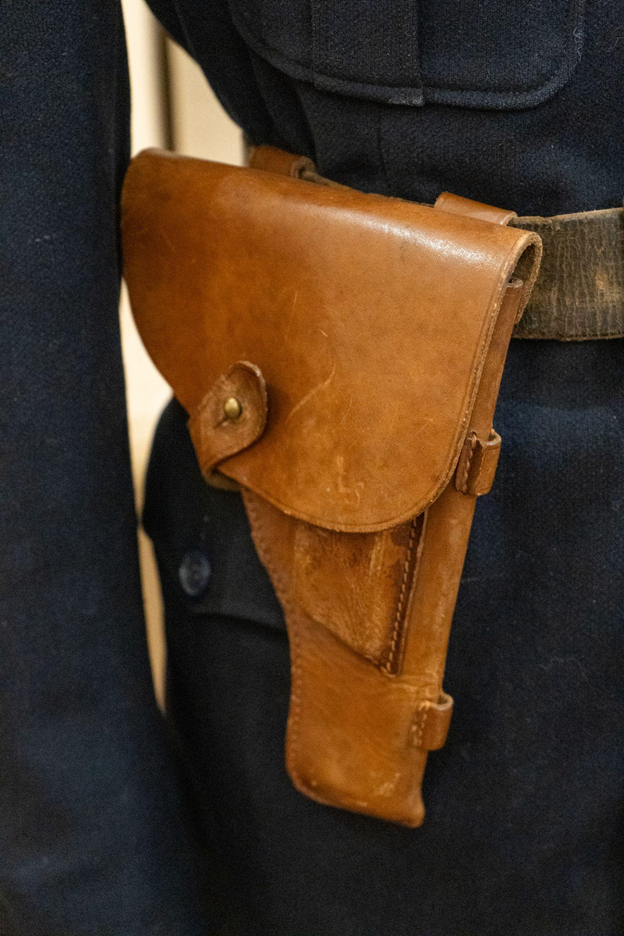Leather Holster Care
Oct 7th 2025
Previously, we’ve published on how to break in a leather holster, whether leather or thermoplastic holsters (like Kydex) are better, and what not to do with a leather holster.
This post will take a slightly more utilitarian direction. So you have a new 1911 leather holster; it’s broken in and you carry. How do you care for the thing so it maintains its value and usability over the long term?
Here are a few things you should know.
Basic Leather Holster Care Considerations
The best leather care is preventative, not routine. For instance, don’t let your leather holster get soaked with sweat or saltwater, if you can help it, and for obvious reasons (this is bad for the gun, too). Excess UV exposure will also discolor and eventually cause physical deterioration of your holster.
However, if your holster is dirty at the surface or has come into contact with some liquid, or it has dust or dirt on the surface, wipe it down as needed with a clean microfiber cloth. Excess moisture can also be removed from it using a rag.
If it has been stained or is exceedingly dirty, dampen the rag and use that to wipe down the holster to remove any dirt, oil or moisture that has been absorbed into the grain. Then, pat it down using a dry cloth in order to remove any moisture. When you’re done cleaning the leather, it should be almost entirely dry; not more than damp to the touch.
How you allow a leather holster to dry after cleaning is also critical. It should not be placed in direct sunlight or near a source of heat, such as a heater or radiator, as this will cause an accelerated loss of moisture that will stress the leather and cause it to warp, crack, or worse. Place it somewhere cool and dry, out of direct light, that’s well-ventilated, to allow it to dry.
Leather that has been in use for a long time will start to stiffen, which can cause one of two things. It can cause delamination, in the case of low grades of leather, and it can cause cracking in the case of top and full-grain leather. In order to keep the leather supple, you will want to periodically apply a leather conditioner, approximately once every 6 months or so, to keep the leather fibers soft and flexible.
More frequent conditioning might be needed in areas with particularly dry climates, and less if the climate is more humid.
When you have your leather holster in storage for a prolonged period of time, it’s also best to protect it from extremely dry or humid conditions, as well as against extremes of temperature. All else being equal, a very dry climate is safer for leather, but both high and low humidity can damage it. Low humidity can cause cracking and high humidity can encourage the growth of mold and cause the leather to rot. Therefore, store your leather holster somewhere cool, relatively dry, where it will not be exposed to dramatic temperature swings.
What Not to Do with Your Leather Holster
This post covers the basic information you need to know about administering basic care to your leather holster, but there are still some things you should be aware of that you shouldn’t do:
- Never let your holster get soaked if you can help it.
- Keep it away from direct heat sources like fireplaces and furnaces.
- Don’t allow your holster to be exposed to direct sunlight for prolonged periods of time.
- Never use harsh cleaners on your holster, such as bleach or dishwashing liquid.
- Do not use cooking oils on leather; although they will soften and condition the leather, they will go rancid and oxidize over time, and will blacken in the leather.
- Do not allow alcohol (such as rubbing alcohol) to come into contact with the leather as it will dry it out and can cause cracking.
- If you have doubts about whether or not you should apply something to leather, follow this maxim: when in doubt, leave it out.

Should You Store Your Gun in Its Leather Holster?
While you might want to keep your gun in its leather holster to improve the custom-like fit between the two, in the long run, this is not a good idea. This is because leather will trap moisture against the surface of the gun, which can hasten corrosion. While it’s fine to store your gun in its holster in the short term, when in storage, it’s best to separate the two.
Shop Leather Holsters Here
Here for a new 1911 leather holster? Shop our full catalog, which includes historical replicas as well as leather shoulder holsters, and if you have any questions about carry or compatibility, get in touch with us directly and we’ll be happy to help.

